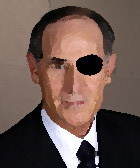
From Hewlett-Packard’s legal counsel, Larry Sonsini, to Tom Watkins, the Hewlett-Packard director who revealed the bugging scandal that has so far claimed the heads of the company’s Chairwoman and several senior execs..
From: Sonsini, Larry
Sent: Wednesday, June 28, 2006 4:05 p.m.
To: Tom Perkins
Subject: RE: HP Confidential
Tom,
I looked into the conduct of the investigation and got a report from counsel at HP who was responsible for the effort. I confirmed his input by talking to Ann Baskins. Here is what I learned:
There was no recording, review or monitoring or director e-mail.
There was no electronic surveillance to monitor director communications.
There was no phone recording or eavesdropping.
The investigating team did not attempt to obtain the phone records of non-employee directors.
The investigating team did obtain information regarding phone calls made and received by the cell or home phones of directors. This was done through a third party that made pretext calls to phone service providers. Apparently a common investigatory method which was confirmed with experts. The legal team also checked with outside counsel as to the legality of this methodology.
There was no “secret spying” i.e. no electronic gear, listening devices, etc., were used.
It appears, therefore, that the process was well done and within legal limits. The concerns raised in your e-mail did not occur.
Let me know if you think I should proceed further.
Larry
Eh? This from the top legal firm in Silicon Valley. The italics in the quote above are mine. I’m with Rich Karlgaard on this one. He says:
What rubbish. When your $2,000 an hour lawyer says “pretext calls” are “a common investigatory method” and “within legal limits” — you have a big problem.
California state Attorney General Bill Lockyer calls HP’s investigation illegal: “The question was, was a crime committed? The answer is yes.”
Sonsini is a disaster. HP should can him. In the most public way.
Come to think of it, Apple, which finds itself distracted by an options backdating scandal, should fire Sonsini, too.
Brocade Communications should have fired Sonsini before it was too late. Former CEO Greg Reyes faces criminal charges for options backdating.
Dan Gillmor — who knows the Valley better than any other reporter — has been saying for a while that it’s high time Sonsini was investigated. Maybe that long-overdue process will now begin.
[Source: Good Morning, Silicon Valley]




